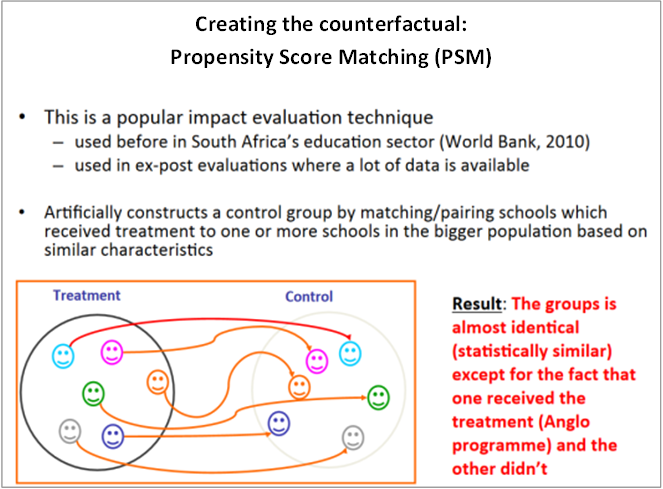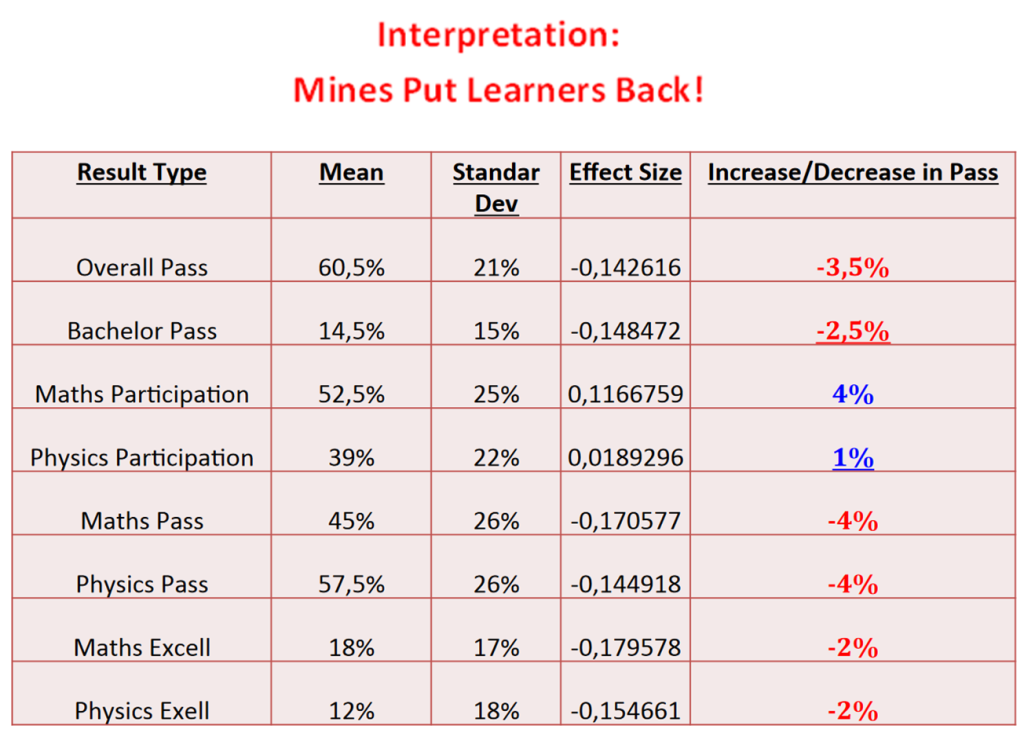Topic
While it is grant-based rather than investment-based per se, corporate social investment (CSI) by mining companies in South Africa is a large and dynamic area of activity in that country. South Africa’s biggest company, Anglo American, spends about R600 million annually on CSI projects, a budget for social interventions that is larger than those of either the World Bank or the British or Japanese aid programs in South Africa.
In his case study, Besharati reports on an evaluation of the impact of Anglo American’s education programs in communities in and around the company’s platinum mines during the period 2010-2014. Working closely with local education officials, Anglo American’s platinum subsidiary, Amplats, made R100 million in CSI grants to strengthen 137 schools, focusing on enrichment and supplementary classes, and additional teacher training, especially in mathematics, sciences and business. The programs also funded some infrastructure (e.g., new schools, labs) and equipment. The evaluation sought to determine the extent to which the Amplats-funded interventions were successful in improving education outcomes and pass rates in the targeted schools. This case is noteworthy in terms of both its evaluation methods and its substantive findings.
With respect to its methods, the study used a mix of both qualitative and quantitative data collection and analysis tools. The evaluation team employed theory of change analysis, semi-structured interviews and focus groups on site in the field, together with econometric and interrupted time series analysis. To create a counterfactual, the team used propensity score matching to artificially create a control group from the larger population of schools that did not receive the Amplats program with schools with similar characteristic but that did received the intervention.
With respect to its findings, the evaluation found that, contrary to expectations, proximity to a mine was a more powerful factor in explaining educational performance than whether a school had received an Amplats program. Indeed, schools nearest mines fared comparatively worse in terms of pass-grade performance even when they themselves had benefited from an Amplats program. In seeking to explain these results, the evaluators concluded that the mines generated distractions for students, such as pollution and protests; local parents channelled too many ill-prepared students into maths and sciences programs in under-resourced classes; and also that, “generally, the company tried to do too many things in too little dosages, thus reducing the chance to make a deep and lasting impact.”
Tool

Source: Besharati 2016

Source: Besharati 2016
Exercise
Take 20 minutes to read the Besharati presentation. One additional aspect of this case is that the evaluation team gave a series of public presentations on its findings to the company, government, and academia. The study also was featured in media stories. Given the complex design of the study, and its finding that the CSI interventions were not able to improve student outcomes, it must have been a challenge to prepare for these presentations and media interviews. If you were the Principal Investigator of the evaluation, how would you prepare? How would you describe the study’s methods and findings to a general audience? How would you summarize them for Anglo American itself? What post-study action would you encourage, by which stakeholders? Prepare to discuss your answers in a facilitated plenary session.
Readings
Besharati, N.A. Platinum and Passes: Lessons from evaluating Impact CSI, Presented to the Executive Workshop on Evaluating Impact Investing Entitled Building the Field, Measuring Success, CLEAR Centre for Anglophone Africa, Venture Capital Trust Fund, GIMPA Centre for Impact Investing, Institute for Policy Alternatives, International Development Research Centre, and the Rockefeller Foundation, Accra, 2016. https://media.africaportal.org/documents/report_16_EDIP_besharati_FINAL_WEB_20140522.pdf
See the full evaluation report: N.A. Besharati. Platinum & Passes: The Impact of Mining Investments on Education Outcomes in South Africa, Research Report 16, SAIIA, Wits School of Governance, SA, May 2014. http://www.saiia.org.za/research-reports/519-platinum-passes-the-impact-of-mining-investments-on-education-outcomes-in-south-africa/file
Rogers, P. Overview: Strategies for Causal Attribution, Methodological Briefs: Impact Evaluation No. 6, Office of Research, United Nations Children’s Fund (Unicef), Florence, 2014. https://www.unicef-irc.org/publications/pdf/brief_6_overview_strategies_causal_attribution_eng.pdf
